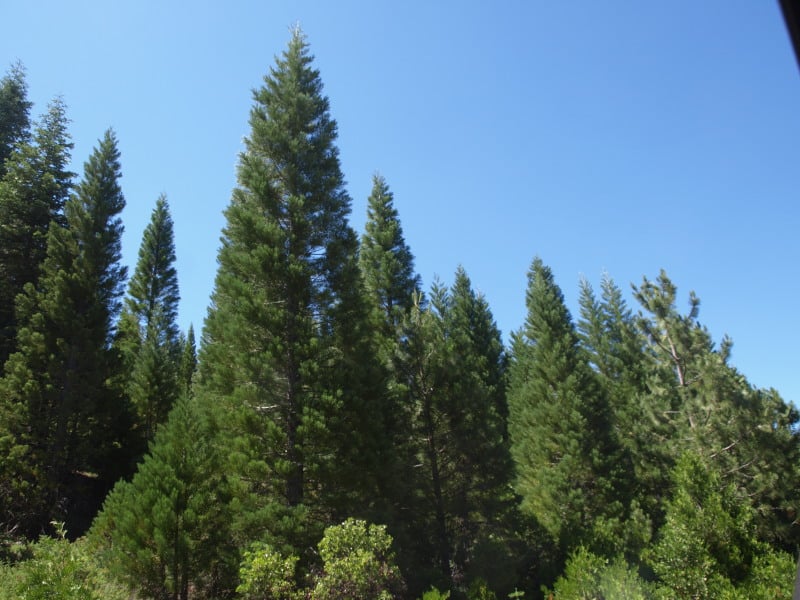We ran across this Giant Sequoia plantation, within our restoration project. I’m not sure of the age of this plantation but, it was probably back in the late 70’s or early 80’s. It is mostly south-facing, and not really like where they normally grow but, a “renegade” culturist did several experiments. I’m not sure what future management ideas are. This one needs some thinning, as their vitality seems quite variable.

When I was at Berkeley, I think I remember vaguely that people liked to plant GS.
I can’t remember if it was to expand the range in case of fires burning the groves? or because it grew well for timber?? Maybe others remember this better.
Lot of good info and a map in the Silvics Manual here:
I wonder if that’s still true about white fir, Larry? Given the dates of the references cited, it must have been written in the early 80’s.
There are many articles on the genetics of Sequoiadendron by Fins and Libby (my colleagues from when I also attended Berkeley). Here’s a good intro and set of links.
Certainly, white fir is overstocked, compared to historical accounts. Just by reducing the understory and intermediate white fir, we’ll still maintain plenty of oversized (and untouchable) white fir old growth. In areas where the white fir cannot invade, incense cedar will often dominate the understory. Both species, together, choke off the desired overstory trees, by “stealing” more of the surface water. Old growth pines are deep-rooted, while the fir and cedar are not. Also, both species are quite flammable, retaining large crowns, unlike the pines.
I do wonder how today’s forests would look if we hadn’t cut down so many old growth “pecky” cedar, back in the 40’s and 50’s. Back then, those “culls” were left out in the woods. The logs take decades to decay, and many still exist. An overstory of cedar and white fir would resist pine regeneration, and stand replacement fires would be severe, with few pine seed sources.